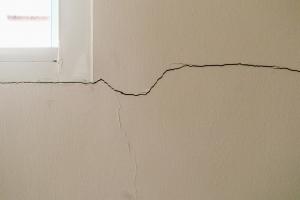Identifying Foundation Damage: Top Warning Signs and What They Indicate for Home Structural Integrity
Foundation movement is a natural process that occurs with shifts in soil moisture or erosion around the structure, but ignoring the signs often leads to more severe structural issues”
SLIDELL, LA, UNITED STATES, November 8, 2024 /EINPresswire.com/ -- Foundation issues present serious risks to a building's structural integrity, and early identification of warning signs can prevent long-term damage. E.C.O. Builders Inc., a trusted construction company in Slidell, Louisiana, highlights key indicators that often signal foundation problems and explains why each one suggests potential underlying issues with the foundation. Proper identification of these signs can assist in prompt intervention, preventing the progressive impact foundation problems may have on a building.— Elwin Ordoyne
Elwin Ordoyne, Vice President of E.C.O. Builders Inc., provides valuable insights on what homeowners and property managers should watch for, saying, “Foundation movement is a natural process that occurs with shifts in soil moisture or erosion around the structure, but ignoring the signs often leads to more severe structural issues.”
Cracks in the Foundation and Slab
Cracks appearing in a foundation or slab are a significant indicator that soil beneath the building may be unstable. A lack of moisture or severe drought conditions can cause the soil to shrink, leaving gaps under the slab that compromise its stability. Conversely, when moisture levels rise due to floods or plumbing issues, the soil expands and exerts pressure on the foundation, causing cracks.
Ordoyne explains, “Cracks in the foundation or slab are often the first signs of instability. These cracks may appear as fine lines initially, but as soil conditions fluctuate, they may expand, allowing water to penetrate and weaken the foundation further.”
Doors and Windows That Stick or Shift
Misaligned doors and windows or those that stick are also potential indicators of foundation movement. As the foundation shifts, the walls and frames can lose their initial alignment, leading to gaps, sticking, or cracked corners around frames. Over time, doors and windows may fail to close properly or show visible separation from their frames.
“The shifting of the foundation results in stress on the walls, often manifesting around door and window frames,” states Ordoyne. “This misalignment points to a foundation struggling to remain level, suggesting possible soil erosion or uneven moisture distribution beneath the structure.”
Uneven or Sloping Floors
Sloping or uneven floors are another indication of foundation movement, often resulting from soil compaction or displacement. In many cases, interior floors will experience dips, creating low or high spots that affect the stability of the entire floor system. Additionally, this floor movement may cause floorboards to separate or become misaligned over time.
Ordoyne notes that uneven floors are “a symptom of the foundation settling unevenly or shifting due to pressure from unstable soil. These slopes impact the stability of the floor system and suggest a need for a thorough foundation assessment to address the underlying cause.”
Cracks in Interior Walls and Ceilings
Cracks in interior walls and ceilings are often attributed to the natural settling of a building, but when they appear in specific areas, such as around doors, windows, or corners, they can signify foundation issues. These cracks often form at weak points in the wall due to the foundation’s inability to support the load evenly as it settles or shifts.
As Ordoyne explains, “Cracks along the walls or ceiling typically appear in stress-prone areas, such as corners or around structural openings. Their presence often points to a foundation that is settling unevenly, affecting the wall’s ability to withstand weight distribution.”
Chimney Separations and Shifts
Chimney separations are one of the most visible signs of foundation instability. Large chimneys concentrate weight on a relatively small area, placing pressure on foundation footings. When foundation movement occurs, this heavy load can lead to separations between the chimney and the main structure. This separation can further expose vulnerabilities in roof flashing, increasing the risk of moisture infiltration.
“Chimney separations indicate that the foundation may be shifting under the weight of the structure, affecting the seal between the chimney and the home,” Ordoyne explains. “When this occurs, moisture and air can enter areas meant to be sealed, highlighting a need for immediate assessment.”
Debris Buildup and Water Pooling Under Structures
Debris buildup and water pooling around or under a structure can indicate poor drainage or improper foundation support. Soil displacement, often exacerbated by heavy rainfall or poor drainage systems, can cause water to accumulate near the foundation, creating voids that further destabilize it. These voids or pockets of water can weaken the foundation over time, causing structural shifts.
Ordoyne points out that water pooling and debris buildup around the foundation “are not only signs of potential moisture issues but can also be contributors to foundation instability. Excess moisture weakens the soil’s structure, leading to uneven settlement and greater susceptibility to foundation movement.”
Sand Pumping as a Preventative Solution
In response to moisture instability around foundations, sand pumping is frequently used to support foundation structures, fill voids, and mitigate soil erosion. By pumping sand into spaces beneath the slab, professionals can stabilize the foundation, preventing further soil displacement or pooling that could worsen foundation issues. This solution also reduces termite activity by eliminating moisture pockets that attract pests and protects against standing water, which can hasten settlement.
The Importance of Regular Foundation Inspections
Consistent foundation inspections are recommended for identifying and addressing these early warning signs. While some indications, such as cracks or sloping floors, are visible, others may require professional inspection. Proper evaluation of the foundation can prevent long-term damage and avoid costly repairs by addressing issues before they worsen.
For homes and properties in areas prone to soil movement, moisture fluctuation, or severe weather, such as Louisiana, foundation health is an integral part of property maintenance. By staying vigilant for these warning signs, property owners can ensure structural integrity and protect their investment.
Morgan Thomas
Rhino Digital, LLC
+1 504-875-5036
email us here
Visit us on social media:
Facebook
Legal Disclaimer:
EIN Presswire provides this news content "as is" without warranty of any kind. We do not accept any responsibility or liability for the accuracy, content, images, videos, licenses, completeness, legality, or reliability of the information contained in this article. If you have any complaints or copyright issues related to this article, kindly contact the author above.


